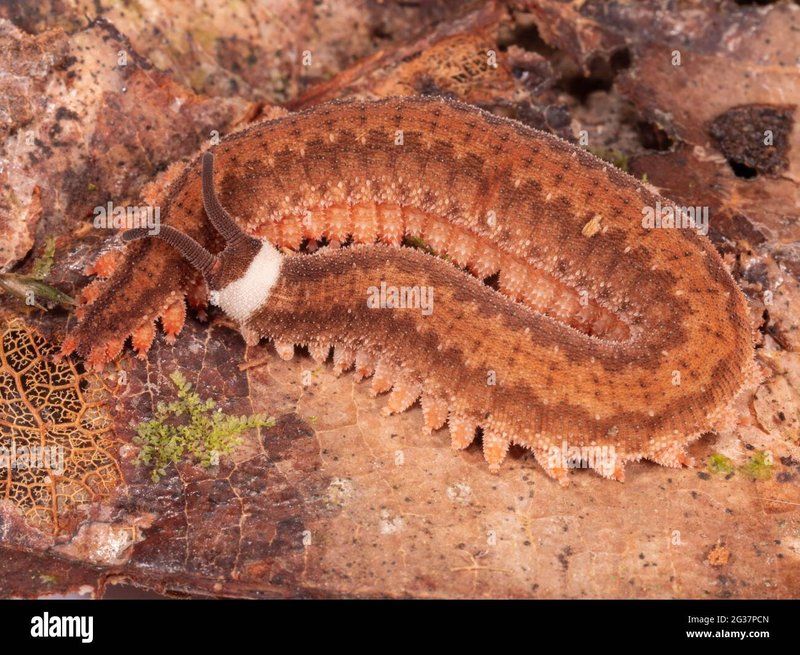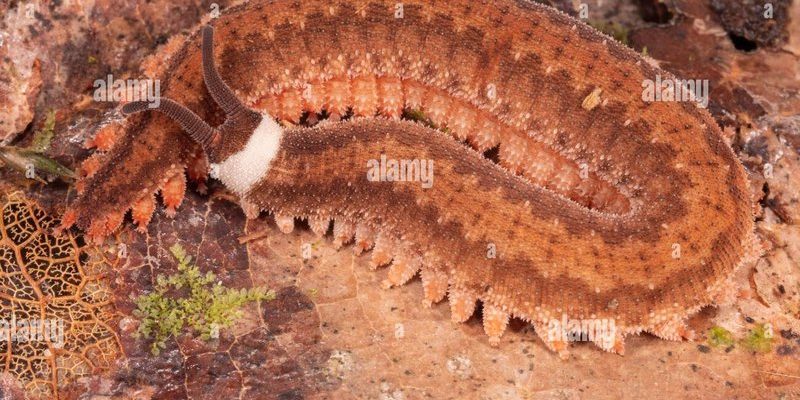
So, why are velvet worms important? Just think of them as the glue holding various parts of the forest together. They may be small and somewhat bizarre in appearance, but they serve as prey for larger animals and help control populations of other invertebrates. In this article, we’ll dive deep into the role of velvet worms in forest food webs, exploring their behaviors, habitats, and the fascinating relationships they maintain with other creatures. Grab a warm cup of coffee, and let’s get started!
What Are Velvet Worms?
Velvet worms, scientifically known as **onychophorans**, are unique creatures that are often found in lush, moist environments like rainforests. Imagine a cross between a caterpillar and an earthworm; they have soft, segmented bodies covered in tiny bristles. This charming exterior is actually a vital part of who they are.
These worms come in various colors, ranging from earthy browns to deep greens, which helps them blend into their surroundings. They can grow up to 15 cm (about 6 inches), though many are much smaller. You might be wondering, “What do these creatures eat?” Here’s the thing: velvet worms are carnivorous! They actively hunt and use a sticky slime to trap their prey, which mainly consists of insects. This hunting style not only displays their unique adaptations but also links them to the food web within their forest habitat.
How Velvet Worms Fit into the Food Web
Think of a forest food web as a complex network of relationships, much like a spider’s web. Each species, including velvet worms, occupies its own spot within this intricate design. As consumers, they play a essential role in maintaining balance among various populations. When you look at the big picture, velvet worms help keep the insect population in check by preying on smaller invertebrates. If their numbers were to decline, it could lead to an explosion of insect populations, creating a ripple effect throughout the ecosystem.
Here’s how their role plays out:
- Prey for Larger Animals: Velvet worms themselves become a meal for larger creatures like birds, frogs, and even some reptiles. In this way, they contribute to the diet of many animals in the food chain.
- Predators: By hunting smaller insects, velvet worms help maintain a healthy balance of species in the forest. This is vital for preventing any one type of insect from overwhelming the habitat.
- Decomposers: When velvet worms die, their bodies decompose and enrich the soil, providing nutrients for plants and other organisms. This nutrient cycling is fundamental for a thriving ecosystem.
Understanding these connections helps illustrate why velvet worms are more than just odd-looking critters—they’re a key piece of the ecological puzzle.
The Habitat of Velvet Worms
Velvet worms thrive in moist, damp habitats, particularly in tropical and subtropical forests. Picture walking through a rainforest, with humidity clinging to the air and sunlight trickling through the canopy. This kind of environment is perfect for velvet worms, as they rely on moisture to survive.
They tend to hide under leaf litter, logs, and rocks during the day, which helps them avoid predators and stay hydrated. You might be surprised to learn that they are more active at night, when they venture out to hunt. This nocturnal behavior not only protects them but also showcases their role as predators in the ecosystem.
However, habitat loss due to deforestation and climate change poses a significant threat to velvet worms and their ecosystems. These changes can disrupt their delicate balance in the food web and impact the entire forest system.
Predator-Prey Interactions Involving Velvet Worms
When it comes to predator-prey dynamics, velvet worms have a fascinating story to tell. As predators, they hunt by slowly stalking their prey. When they get close enough, they shoot out a slime that immobilizes insects, allowing them to feast. This hunting method is not just effective; it also showcases their unique biology.
However, velvet worms themselves are not without threats. Birds, reptiles, and even larger invertebrates prey on them. This constant interaction highlights the delicate balance of survival. Imagine a game of tag where everyone is both it and the one being chased; that’s what life looks like for these little worms.
As part of the food web, the survival of velvet worms influences other species. If they were to disappear, the insects they control could flourish unchecked, leading to a cascade of consequences for the forest ecosystem. Similarly, their decline would affect the animals that rely on them as a food source.
The Importance of Velvet Worms in Ecosystem Health
Ecosystem health relies on balance, and velvet worms are critical to maintaining this stability. Their activities contribute to nutrient cycling, which is vital for plant growth. As they hunt and decompose, they enrich the soil, supporting not just trees and plants, but also larger animals that rely on them for shelter and food.
Here’s a fun fact: velvet worms are often referred to as “living fossils” because they’ve changed little over millions of years. This resilience speaks to their adaptability and the importance of their role in ecosystems. If they can survive for eons, imagine what they can contribute to the forest’s vitality!
Moreover, studying velvet worms can shed light on broader ecological processes. By understanding their interactions, scientists can get a clearer picture of how ecosystems function and what happens when one part is altered.
Conservation Efforts for Velvet Worms
Given their significance in forest food webs, conservation efforts for velvet worms are crucial. This involves protecting their habitats from deforestation, pollution, and climate change. Many organizations are working tirelessly to safeguard these moist environments, recognizing that the health of our forests directly affects the survival of these unique creatures.
You might wonder how you can help. Supporting conservation initiatives, whether through donations or volunteer efforts, can make a difference. Also, spreading awareness about velvet worms and the importance of biodiversity helps foster a culture of appreciation for nature’s intricate systems.
With the threats they face, it’s more important than ever to understand velvet worms’ role in the ecosystem. By acknowledging their contributions, we can better appreciate the delicate dance of life in our forests.
As you can see, velvet worms might not be the most famous creatures in the animal kingdom, but they play a vital role in forest food webs. From being predators to prey, they help maintain balance and health in their ecosystems. By understanding these connections, we can appreciate the complexity and interdependence of life in the forest.
So next time you stroll through a forest or think about insects and worms, remember the velvet worms. These remarkable creatures contribute greatly to the world around us, proving that even the smallest beings can make a big impact. Let’s work towards protecting their habitats and ensuring that these fascinating “living fossils” continue to thrive in our forests for generations to come.

